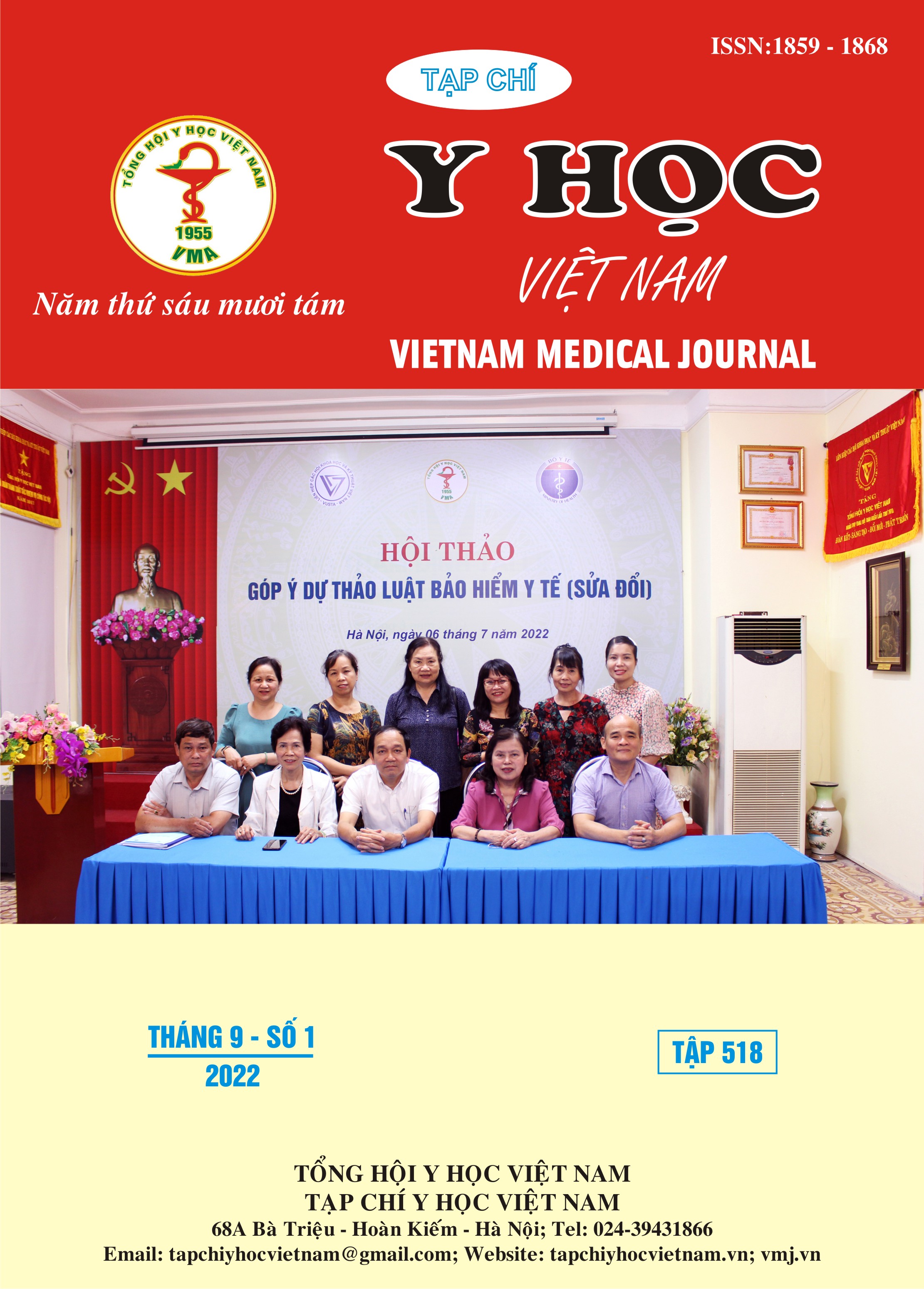EROCTOR SPINAE PLANE BLOCK FOR PEDIATRIC LIVER LOBECTOMY: A CASE REPORT
Main Article Content
Abstract
Erector spinae plane block is a new regional anesthetic technique, with similar analgesic effects as paravertebral space anesthesia, technically easy to perform, has fewer complications, and is not absolutely contraindicated in patients with coagulopathy. We report a male patient a 30-month-old, body weighing 12kg, diagnosed with hepatoblastoma. The patient underwent liver lobectomy 6th and 7th. The patient received endotracheal anesthesia, and multimodal analgesia including continuous infusion of fentanyl, paracetamol, and right-side erector spinae plane block. The patient is lying on the left side, placing the ultrasound probe at the level of the 7th thoracic vertebra on the right side, performing an anesthetic needle puncture under ultrasound, determining the plane of the erector spinae plane, checking the needle aspiration without blood and air, conducting inject 6 ml of Levobupivacaine 0.25% solution into the erector spinae plane. After surgery, the patient was able to safely and conveniently extubate the endotracheal tube and was transferred to the postoperative recovery room with complete consciousness and good pain relief (FLACC score: 0). Erector spinae plane block with multimodal analgesia has good analgesia, and pediatric patients can safely and conveniently extubate after liver lobectomy.
Article Details
Keywords
Erector spinae plane block, liver lobectomy, pediatric
References
2. Tzimas P, Prout J, Papadopoulos G and Mallett SV: Epidural anaesthesia and analgesia for liver resection. Anaesthesia 2013; 68(6): 628-35
3. Baidya DK, Khanna P and Maitra S: Analgesic efficacy and safety of thoracic paravertebral and epidural analgesia for thoracic surgery: a systematic review and meta-analysis. Interact Cardiovasc Thorac Surg 2014; 18(5): 626-35 4. Yeung JH, Gates S, Naidu BV, Wilson MJ and Gao Smith F: Paravertebral block versus thoracic epidural for patients undergoing thoracotomy. Cochrane Database Syst Rev 2016; 2(CD009121
4. Chen H, Liao Z, Fang Y, Niu B, Chen A, Cao F, Mei W and Tian Y: Continuous right thoracic paravertebral block following bolus initiation reduced postoperative pain after right-lobe hepatectomy: a randomized, double-blind, placebocontrolled trial. Reg Anesth Pain Med 2014; 39(6): 506-12
5. Krediet AC, Moayeri N, van Geffen GJ, Bruhn J, Renes S, Bigeleisen PE and Groen GJ: Different Approaches to Ultrasound-guided Thoracic Paravertebral Block: An Illustrated Review. Anesthesiology 2015; 123(2): 459-74
6. Schreiber KL, Chelly JE, Lang RS, Abuelkasem E, Geller DA, Marsh JW, Tsung A and Sakai T: Epidural Versus Paravertebral Nerve Block for Postoperative Analgesia in Patients Undergoing Open Liver Resection: A Randomized Clinical Trial. Reg Anesth Pain Med 2016; 41(4): 460-8
7. Patnaik R, Chhabra A, Subramaniam R, Arora MK, Goswami D, Srivastava A, Seenu V and Dhar A: Comparison of Paravertebral Block by Anatomic Landmark Technique to Ultrasound-Guided Paravertebral Block for Breast Surgery Anesthesia: A Randomized Controlled Trial. Reg Anesth Pain Med 2018; 43(4): 385-390
8. Forero M, Adhikary SD, Lopez H, Tsui C and Chin KJ: The Erector Spinae Plane Block: A Novel Analgesic Technique in Thoracic Neuropathic Pain. Reg Anesth Pain Med 2016; 41(5): 621-7
9. Huang W, Wang W, Xie W, Chen Z and Liu Y: Erector spinae plane block for postoperative analgesia in breast and thoracic surgery: A systematic review and meta-analysis. J Clin Anesth 2020; 66(109900
10. Fang B, Wang Z and Huang X: Ultrasound-guided preoperative single-dose erector spinae plane block provides comparable analgesia to thoracic paravertebral block following thoracotomy: a single center randomized controlled double-blind study. Ann Transl Med 2019; 7(8): 174


